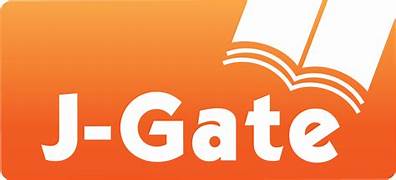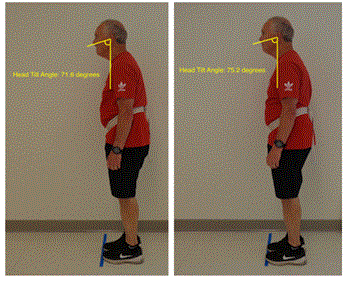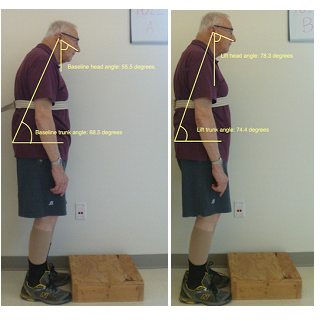Physical Medicine and Rehabilitation
Physical Medicine and Rehabilitation publish original, peer-reviewed research, expert reviews, and clinical case reports that focus on practice and research and developments in physical medicine and rehabilitation. The journal aims to disseminate information on therapeutic utilization of different pharmaceutical agents, optimal functional restoration of patients with disabilities, treatment of neuromuscular impairments, application of electrodiagnostic strategies, and comprehensive care for patients.
Some of the subjects covered under the journal include:
- Prevention and diagnosis
- Treatment and rehabilitation of musculoskeletal conditions
- Spinal cord injury
- Cardiopulmonary disease
- Trauma
- Brain injury
- Acute and chronic pain
- Pediatric rehabilitation
- Interventional pain management
- Stroke rehabilitation
- Mobility
- Gait and pediatrics
- Amputation
- Prosthetics and orthotics
- Cancer rehabilitation
- Aging and exercise
- Educational and administrative aspects of the field
Editorial Contact
Sarah Cowan, Managing Editor
Journal Information
ISSN: 2576-8212
Current Volume: Volume 2, Issue 1
Open Access: For all article types
Average time to first decision: 36 days (41 days in 2023 YTD)
Impact metrics
The following citation metrics are produced by abstracting and indexing databases using their respective datasets.
Google Scholar (h5-index and h5-median scores awaiting)
Benefits of publishing with us
Open Access
All articles published by Physical Medicine and Rehabilitation are made freely and permanently accessible online immediately upon publication, without subscription charges or registration barriers.
Article Processing Charges
Physical Medicine and Rehabilitation accomplish global open access. The journal, therefore, levies an affordable article-processing charge of $1495 for each article accepted for publication.
Peer Review — High standard, rigorous peer review
All articles that reach us undergo a double-blind peer review by at least two anonymous reviewers before being considered for publication in the journal.
Post-publication Open Peer Review
Following publication, the peer review comments would be made open for anyone to read. The authors have the option to make the peer review history publicly available after publication.
Research Promotion
Increased credibility and wider dissemination of published articles.
FEATURED ARTICLES
Senior Editors
John Boatwright
Department of Health and Kinesiology
Lamar University, USA
Editorial Board
Cory Christiansen
School of Medicine
University of Colorado Denver, USA
Paul H. Wehman
Medical College of Virginia
Virginia Commonwealth University, USA
Nancy A. Nuzzo
Department of Physical Therapy
University of Jamestown, USA
Ann-Dorthe Olsen Zwisler
Knowledge Center for Rehabilitation and Palliative Care
University of Southern Denmark, Denmark
Reed C. Williams
Lewis Katz School of Medicine
Temple University, USA
Frederick J. Goldstein
Department of Bio-Medical Sciences
Philadelphia College of Osteopathic Medicine, USA
Gaspar Rogério da Silva Chiappa
Faculdade Anhanguera
Area of Health, Porto Alegre, Brazil
Chang-il Park
Department of Rehabilitation Medicine
Yonsei University, Korea
Hassan Monfared
Department of Rehabilitation Medicine
Emory University School of Medicine, USA
Gaëtane Stassijns
Department of Physical Medicine and Rehabilitation
Antwerp University Hospital, Belgium
J.J. Mowder-Tinney
Physical Therapy Department
Nazareth College Physical Therapy, USA
Afsaneh Nikjooy
Department of Physical Therapy
Iran University of Medical Sciences, Iran
Hossein Negahban
Department of Physical Therapy
Mashhad University of Medical Sciences, Iran
Tina A. Cloney
Department of Exercise Science & Sport
Millikin University, USA
Isabella Schwartz
Department of Physical Medicine and Rehabilitation
Hadassah University Hospital, Israel
Wilton Remigio
Physical Therapy Department
Misericordia University, USA
Leung Ping Chung
Faculty of Medicine
The Chinese University of Hong Kong, China
Heidi Ojha
Department of Physical Therapy
Temple University, USA
Olavi Airaksinen
Department of Physical Medicine and Rehabilitation
Kuopio University Hospital, Finland
Sang-Hun Ko
College of Medicine
University of Ulsan, South Korea
Maciej Plaszewski
Faculty of Physical Education and Sport
Warsaw University, Poland
Helena Burger
Department of Physical and Rehabilitation Medicine
University of Ljubljana, Slovenia
Teresa Paolucci
Complex Operative Unit in Physical Medicine and Rehabilitation
“Sapienza” University of Rome, Italy
Ruth Ann Mathis
Department of Physical Therapy
Harding University, USA
Guidelines for Submission
Manuscript Preparation
Submission and Components
Submissions to Rivera journals should include the following:
- Cover Letter
- Manuscript
- Figures and Tables
- Supplemental Materials
Authors are encouraged to submit all the components as 'zip file' while submitting on our online system or via email as an attachment.
Cover Letter should:
- briefly summarize or provide an outline of your manuscript, and why it is a worthy contribution to the concerned journal;
- specify the Rivera journal that your manuscript best pertains to;
- indicate, if applicable, that it is submitted as a part of Special Issue;
- specify the manuscript type (original research, review, etc.)
- detail any previous interaction(s) with Rivera Publications (previously submitted)
- specify all authors' information, including affiliation
- include acknowledgments and funding information (if applicable) and any competing interests
Authors
All persons who qualify for authorship should be listed as authors. However, the corresponding author must ensure that each author listed has substantially contributed or participated sufficiently in the work and is responsible for that particular portion of the manuscript. However, people who do not qualify for authorship should be listed in acknowledgments.
One author (corresponding author) should be listed with an asterisk and should provide his or her email address. For the remaining authors, if applicable, following information should be included:
- First name and last name
- Complete affiliation, along with the country
- Email address (optional, but mandatory for the corresponding author)
For example:
Robert Ludwig1
Yale University, New Haven, Connecticut, USA
Acknowledgements
This should include all the people who have contributed toward the work in one way or the other. However, authors are required to ensure that people acknowledged should agree to being so named.
Funding Information
List all the sources of funding, including relevant research grant numbers, as applicable. Also, authors are encouraged to list all the contributing authors associated with specific funding, if applicable.
Conflict of interest
The corresponding author is required to provide a statement of conflict of interest on behalf of all the authors. For further information, please refer to our Conflict of Interest Policy page.
Optional information
While we are not obligated to use these or recommend to the concerned Editor(s), we do encourage authors to provide names and contact information of 2-4 external reviewers and, if applicable, 1-2 opposed reviewers.
Manuscript Layout
The word count for original research is 3500–4000 words and up to 5500 words for studies involving meta-analysis. Authors are encouraged to employ a standard and concise writing style. If you are not a native English speaker, we encourage you to utilize our language editing services-or ask a native English speaking colleague for assistance.
All manuscript submissions can have the following sections:
- Title
- Abstract
- Keywords
- Main Text
- Introduction
- Materials and methods
- Results
- Discussion
- Conclusion(s)
- References
Title
The title should not exceed 200 characters and set in title case. The title should be concise, specific, and easily comprehensible to readers.
Abstract
The abstract should not exceed 300 words and should be unstructured (without sub-heading such as objective, methodology, results, discussion, etc.). It should provide a clear description of the objective(s) of the study, demonstrate the methodology used, and summarize the study's prime conclusion(s). At the end, a statement regarding the study's significance to a potentially wider audience should be included.
Keywords
Authors can provide 4-6 keywords. The first letter of each keyword should be upper case, and keywords should be separated by a semicolon (;).
References
Published work along with any citable items should be cited in the reference list. While we follow very stringent reference formats, authors need not to spend time formatting their reference. They can submit the manuscripts formatted in any reference style (style will be formatted once the manuscript is accepted for publication), but it is preferable that they adhere to the journal format.
For Health and Medicine
Rivera uses AMA style. Items are listed numerically in the order they are cited in the text.
Example journal article (2-6 authors): Salwachter AR, Freischlag JA, Sawyer RG, Sanfey HA. The training needs and priorities of male and female surgeons and their trainees. J Am Coll Surg. 2005; 201: 199-205.
Example journal article (more than 6 authors): Fukushima H, Cureoglu S, Schachern P, et al. Cochlear changes in patients with type 1 diabetes mellitus. Otolaryngol Head Neck Surg. 2005; 133: 100-6.
Example book: Modlin J, Jenkins P. Decision Analysis in Planning for a Polio Outbreak in the United States. San Francisco, CA: Pediatric Academic Societies; 2004.
Example book chapter: Solensky R. Drug allergy: desensitization and treatment of reactions to antibiotics and aspirin. In: Lockey P, ed. Allergens and Allergen Immunotherapy. 3rd ed. New York, NY: Marcel Dekker; 2004:585-606.
Example online article: Wolf W. State's mail-order drug plan launched. Minneapolis Star Tribune. May 14, 2004:1B.
Example article from any database: Calhoun D, Trimarco T, Meek R, Locasto D. Distinguishing diabetes: Differentiate between type 1 & type 2 DM. JEMS [serial online]. November 2011; 36(11):32-48. Available from: CINAHL Plus with Full Text, Ipswich, MA. Accessed February 2, 2012.
In-text citation: For referencing an article, a number is used. This is different from in-text citations in AMA—author's last name is not used. The order of numbering will be contingent on the order in which you use that reference within your paper. For example, the first article referenced will be given number one in superscript (1) followed by second and third articles as 2,3. In references section, the articles should appear numerically in the order they are cited within the text.
Figures and Tables
Figures and tables should be included in the main text (manuscript) to aid in the review process. However, for larger files (size exceeding 10 Mb) must always be submitted separately (should be properly mentioned in the main text, wherever applicable).
Figure captions and legends
Figure files should be included in the main document, and not as supplemental materials. Figure caption should be preceded by the figure, while figure legends should immediately follow the figure. Figure captions should be concise (not to exceed 18 words) and set in bold type. All figures should be numbered in sequence, using Arabic numerals, for example, Figure 1, Figure 2, etc.
Table captions and legends
Tables should be cited in ascending numeric order. Each table should be preceded by a table caption (brief and specific; not to exceed 18 words), and immediately followed by table legends, if applicable, used to explain abbreviations and other supporting information about the data. Larger tables, however, can be submitted as supplemental materials.
Review Comments and Revision
Submission Instructions
While submitting a revised manuscript, the authors should include the following:
Revised manuscript (clean copy): Prepare a clean copy of your revised manuscript that does not show track changes. Rename this file as "Main Document".
Revised manuscript (marked-up copy): Include a copy of your manuscript file showing the changes you have made (track changes). Rename this file as "Manuscript with Track Changes".
Response to reviewers: Address the specific points made by each Reviewer and/or Editor. Include your responses to all the reviewers' and editor's comments and list the changes you have made to the manuscript. Rename this file as "Response to Reviewers".
Supplementary Information
Information integral to the comprehensive understanding of the manuscript, but is either too large to be included in the main document or due to any other reason, should be submitted as support materials, such as 3-D visualizations, interactive graphics, large tables and/or figures, and so on. However, authors should note that normal figures and tables should not be included under supplemental materials.
Ethical Guidelines
For manuscripts reporting medical studies that involve human or animal subjects, ethics committee that approved the study must be identified in the manuscript. For studies involving human subjects, all work must conform to the recognized standards as per the "Declaration of Helsinki". In case of any experiments involving animals, authors must provide a declaration that all measures were taken to avoid animal suffering at each stage and also must furnish a detailed description of the procedures used.
Patient Consent
In manuscripts reporting patient cases, patient anonymity must be preserved. Case reports submitted to Rivera Publications should conform to the International Committee of Medical Journal Editors' (ICMJE) recommendations. Patient privacy should be taken care of, and personally identifiable information should not be revealed without informed consent. If informed consent has been obtained, the details must be mentioned in the manuscript.
For live patients, signed consent is mandatory if the authors wish to reveal the patient's identity. In case of deceased patients, consent must be taken from patient's next of kin. If patient's consent was not obtained, patient's details should be anonymized as much as possible. Patient's photographs need to be cropped sufficiently to prevent revelation of identity.
Authors are not required to submit the copy of the patient's consent while submitting their manuscript for consideration in Rivera Publications. However, they should confirm in the Cover Letter that the patient's consent has been obtained. In certain instances, the Editorial Office might request the authors to provide a copy of the same.
Articles in Press
No Published Articles/ No article in press

J-Gate
J-Gate is bibliographic database to access global e-journal literature – indexing over 71 million journal articles, updated daily.
© 2025. Rivera Publications, Inc. All rights reserved.









